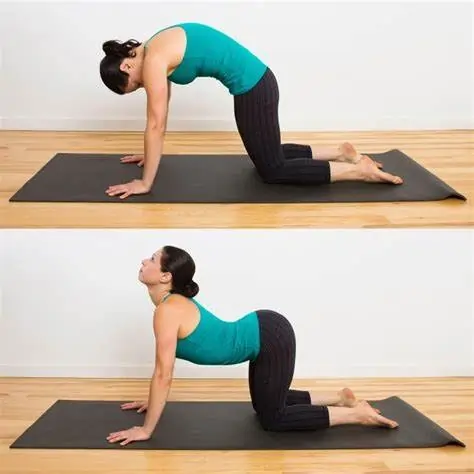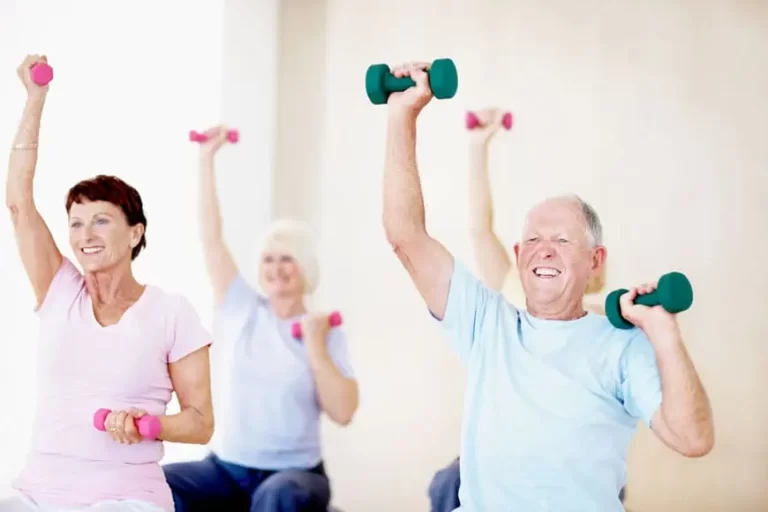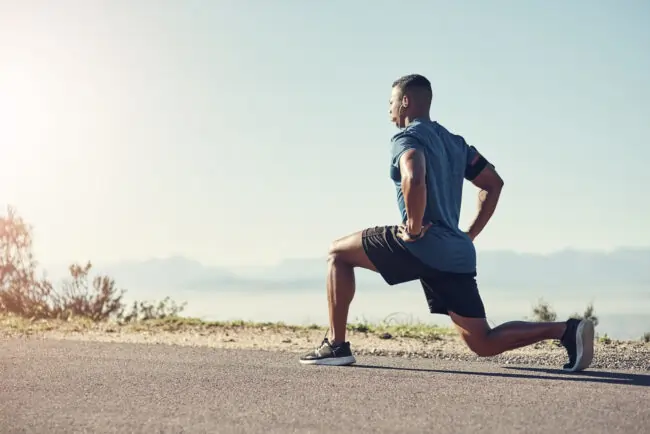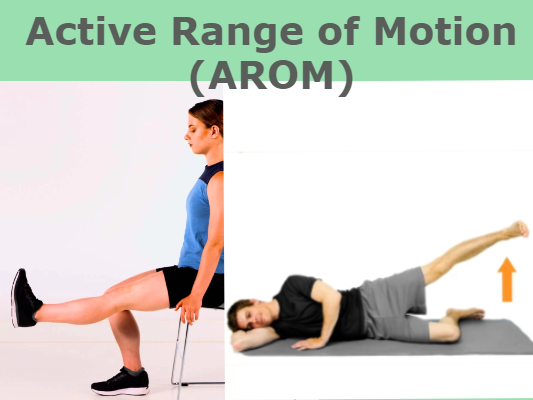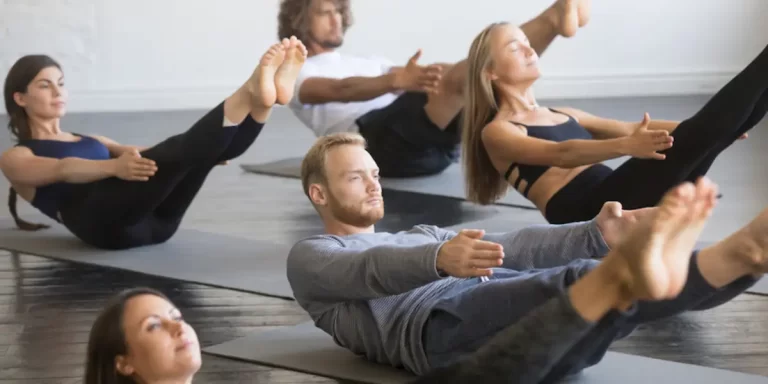Cat and Cow Pose
The Cat and Cow Pose, a gentle yet powerful sequence from yoga, is a staple for promoting spinal flexibility and relieving tension in the back and neck. This dynamic movement, known as Marjaryasana (Cat) and Bitilasana (Cow), combines mindful breathing with fluid transitions, making it an excellent exercise for people of all fitness levels.
Whether you’re looking to improve posture, alleviate stress, or prepare your body for deeper stretches, the Cat and Cow Pose offers a rejuvenating experience for both the body and mind.
What Is Cow Yoga Pose?
Because it looks like a cow stretching, the cow position got its name, the stance is known as bitilasana in Sanskrit, which means “cow pose.” Your neck, spine, and hip muscles are stretched in the convex posture of the cow pose. It works your core and is a member of the back-bending family of yoga positions.
What Muscles Does Cow Yoga Pose Work?
- Hip flexors
- Trapezius muscle
- Erector spinae
Benefits of cow pose:
- increases mobility by gently massaging the spine.
- Neck and back stretches
- Cow position combined with a fantastic pre-yoga warm-up
- enhances spinal fluid circulation
- and prepares the hands and wrists for a downward dog by strengthening their muscles.
What are the Preparatory poses for Cow Pose?
There are some preparatory poses below:
- Tabletop
- Sphinx Position
- Salabhasana (Locust Position)
- Bhuganjasana (Cobra Position)
How to Perform Cow Pose?
- Your hands should be shoulder-distance apart and slightly forward of your shoulders, with your knees beneath your hips.
- Firmly press down with your hands.
- Stretch your chin and chest, expand your chest, and lower your abdomen to arch your back as you inhale.
- To extend your upper back, concentrate on lengthening the back of your neck while maintaining an active belly muscle.
- Hold for a few breaths.
- When you’re ready to get out of the pose, keep your spine in the starting position.
Cat and Cow Pose video:
What are Follow-up poses for Cow Pose?
Before assuming the cow position, begin with your legs up the wall. As you expire, switch between the cow and cat positions to let the energy flow.
- Marjaryasana (Cat Position)
- Balasana (Child’s Position)
- Uttanasana (Standing Forward Bend)
What are the Beginners’ Tips in Cow Pose?
- To raise awareness in that location, ask a buddy to put their hands on your upper back.
- To make your head drops last, try starting the movement from your tailbone and working your way up the spine. You can use this to investigate the curves in various back regions.
What is the Variation of Cow Pose?
- To create a balancing position, extend the opposing arm and leg as you inspire.
- Change sides and return to the center, influencing your breathing.
- Seated version: Take a seat in a chair or just cross your legs. As you inhale, rest your hands on your knees and open your chest. Include the Cat Position in the outbreath.
- Standing version: Relax with your legs spread out apart and with your knees bent. Include the Cat Position in the outbreath.
- While on all fours, try moving your tailbone first and then your spine to create a wave-like action.
- Expand your opposing arm and leg in the Cow position, then draw your elbow back and knee to your nose while drawing your belly in and rounding your back in the Cat posture. This will turn a Cat-Cow series into a core-raising exercise.
The following is a list of several common variations of the yoga pose Cow Position, with the basic position being the Cat-Cow Position (Marjaryasana Bitilasana).
- Cat-Cow Position
- Cat-Cow Child Position Flow
- Cow Position
- Kneeling Cat Swan Flow
- Cat Position
- Cat-Cow Position Forearms
- Cat-Cow Position With Leg To Side
- Cat-Cow Position Rib Cage Circles
- Hovering Cat Position
- Cat-Cow Position Variation Wide-Legged
- Cat Position Variation Knee
What are the Types of Cow Pose?
- Seated Cat-Cow Position
Seated Cat Cow Position
What is the Seated Cat-Cow Pose?
Simple yoga poses are known as the “cat” and “cow” stances. The Cat Position’s Sanskrit name, Marjaryasana, which is derived from Marjay, means “cat.” The Cow Position is known by its Sanskrit name, Bitilasana, which translates from Bitil to “cow.” In contrast to Upavistha, which signifies seated in Sanskrit, Upavistha Bitilasana Marjaryasana is performed while seated. The Sanskrit term for the yoga pose known as Cat-Cow is Chakravakasana. During the pose, your spine changes from a rounded (flexed) to an arched (extended) position.
Cat-Cow seated The pronunciation is bit-ee-LAH-sah-Nah or mar-jar-YAH-sah-Nah. This category includes seated positions, forward bends, chest openers, and backbends.
This position follows the same guidelines and directives as the Cat-Cow Position (Bitilasana to Marjaryasana). This posture is designed to be restorative since it provides the full-back with a great deal of comfort following strenuous yoga poses. The Seated Cat-Cow Position is an excellent way to prepare for Malasana since it requires the stability of the abdominal muscles.
Anyone who finds it difficult to get to the ground to do the Cat-Cow position or who spends a lot of time sitting down can benefit from the Seated Cat-Cow posture, which helps move fluid from the neck to the hips.
Seated Cat-Cow is set up by sitting in a chair with your back against the backrest. With your head over your heart, shoulders over your hips, and your feet flat on the floor with your knees over your heels, you should sit with a normal spine. If you have short legs, you might need props or blankets beneath your feet; if you have long legs, place them on the chair’s seat. to assist you in causing your hips to tilt slightly so that the pubis bone descends and the sit bones rise. This will give you a normal spine, with a convex middle back and a concave neck and lower back.
To lengthen your spine, begin by applying pressure to your thighs with your hands. Stretch your back to the back of the chair and your tummy to your spine in the Cat position. At the same time, tilt the hips below so that the shoulders roll forward the head drops, and the sit bones migrate toward the front of the seat. Then, putting the spine in a back twist, do the Cow position by motivating and conducting the belly forward, with the sternum and chest moving forward and up, the shoulders coming back, and the head rising up and back as far as is comfortable. Removing the sit bones at the same time.
Tips: While the sit bones move a few inches in each direction, the skin and a portion of the muscles remain stationary against the chair while charging the hips anteriorly or posteriorly. Allow the head to remain an extension of the spine in the event of a neck injury or pain; do not allow it to rise and fall.
This position can be used while sitting in front of a computer, television, sporting event, automobile, and many other positions.
In addition to improving sitting posture, the Seated Cat-Cow position opens the chest to let in more air, massages the spine and internal organs, and extends the neck and spine. Cat-Cow’s breath-based movement relieves tension and stress while promoting mental calmness.
After doing the strenuous positions above, the Seated Cat-Cow Position, which is similar to a restorative position, can be used to relax the spine and lower back:
- Camel Position (Ustrasana)
- Upavistha Konasana (Seated Straddle Position)
- One-Legged King Pigeon Position (Eka Pada Rajakapotasana)
- Wheel Position (Urdhva Dhanurasana)
- To get the body ready for more strenuous yoga poses or flows, the seated Cat-Cow Position is often used as a warm-up.
How to Perform Seated Cat-Cow Pose?
- Stretch your spine, raise your body upward, sit on the floor, cross your legs in Sukhasana, and take a couple of closer breaths.
- Your hands should be relaxed above your knees. Return to the Seated Cow Position and let your shoulder blades circle and separate. Take a break. Focus on drawing the abdomen upward and deeply in. To drag yourself deep within and make your shoulders and chest disappear, lock your chin firmly to your chest and use your hands on your knees for strength.
- Lead with your head to change the movement. Look up at the chest puffing out, the back arching, and the vaulting. go back to the Standing Cow Hold after grasping it here. Extend the spine completely inwards, and as the chest is pushed forward, feel for any stiffness in the neck as it is taken deep upward.
- In contrast to the Cat-Cow Position (Bitilasana Marjaryasana), this exercise is gentle on your core when you are seated because you are not using your core to support your entire body weight.
- When you are ready, bring the navel into the spine and circle the full-back to deepen the pose. Because abruptly pressing the navel inward can create discomfort or stomach stiffness, this should be done very slowly and cautiously.
- You will be able to gain from this position if you stay here for more than six rounds. Make an effort to breathe rhythmically.
- Let your body and legs relax slowly, extend them in front of you, and adjust fully.
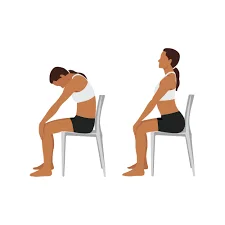
What are the Modifications in Cow Pose?
Alternatives: Chair Cow position
Modifications: Depending on your comfort level, you can either place the tops of your feet on the floor or tuck the feet underneath.
Secure your knees with a bent blanket below if they are sensitive.
What are the Contraindications for the Cow Pose?
Here are some tips for practicing Bitilasana, often known as the Cow Position, to prevent further bodily harm.
- Injury to the shoulder, neck, wrists, hip, knee, and back.
- Recent or chronic back pain or injury
- Blood Pressure
- Migraine
- Spondylitis
- Arthritis of the knee and wrists
- Pregnant women in their second and third trimesters should refrain from this position.
What are the Common Mistakes in Cow Pose?
- Since cat-cow is a simple, beginning yoga pose, there is little chance of damage.
- But if you want to take your newfound passion for yoga a step further, it’s even more important to build a strong foundation.
- Consult a healthcare provider before beginning yoga if you are recovering from a neck or spine injury. By keeping two key elements in mind, you may improve the Cat-Cow and avoid some frequent yoga blunders.
- Do not put undue tension on your neck.
- Don’t move your arms; move your back.
- A basic yoga pose that doesn’t involve any twitching
FAQs
Does cat-cow pose to increase height?
Since it releases all stress from the back, abdomen, and buttocks, the cat-cow stance is a great yoga pose to get taller. 3. Tadasana: Keep your feet together and your hands hanging by your sides as you stand upright on the mat with your head, waist, and legs in a straight line.
Can we do a cat-cow pose during periods?
You might want to attempt the following yoga poses: Cobra, Cat, Cow, and Fish. They work best on days when your menstruation is heavier and may help you deal with severe cramping. The ideal time to perform stretches is when the body is warm, such as after taking a bath or shower.
Is Cat-Cow good for the spine?
The neck, shoulders, and spine become more flexible in the cat-cow stance. Additionally, the exercise extends the muscles in the chest, belly, back, and hips.
Who should not do cat-cow?
Avoid the cat-cow stance if you have a knee, shoulder, arm, or wrist condition. Maintain a neutral posture when experiencing neck ache. Avoid the pose or only do it under a trained yoga instructor’s supervision if you have severe back discomfort.
References:
- Cat Cow Pose Yoga (Bitilasana Marjaryasana) | Yoga Sequences, Benefits, Variations, and Sanskrit Pronunciation | Tummee.com. (2017, November 20). Tummee.com. https://www.tummee.com/yoga-poses/cat-cow-pose
- Ryt, A. P. (2024a, June 2). How to Do Cat-Cow Stretch in Yoga. Verywell Fit. https://www.verywellfit.com/cat-cow-stretch-chakravakasana-3567178
- EkhartYoga. (2023, June 29). Cat Pose benefits, tips, and variations – Ekhart Yoga. Ekhart Yoga. https://www.ekhartyoga.com/resources/yoga-poses/cat-pose
- Jordan, C. (2024, August 13). How To Do Cow Yoga Pose. WebMD. https://www.webmd.com/fitness-exercise/how-to-do-cow-yoga-poseCopy
- Sorathiya, D. (2024, October 3). Bitilasana Yoga Pose: Health Benefits, How to do? Mobile Physiotherapy Clinic. https://mobilephysiotherapyclinic.in/bitilasana-yoga-pose/#Seated_Cat_Cow_Position

